NCERT class 9 chapter 6 solutions lines and angles go over some essential topics that must be understood well before you are preparing for your exams, these include various axioms and terminologies. Class 9 Maths NCERT Solutions chapter 6 will make you appreciate these concepts via meticulously prepared solutions that go through every single question in the NCERT exercises.
From an exam point of view, students will be expected to answer at least some of these questions independently or as part of some other question.
Table of Contents
NCERT Solutions for Class 9 Maths Chapter 6 Lines and Angles Exercise 6.1
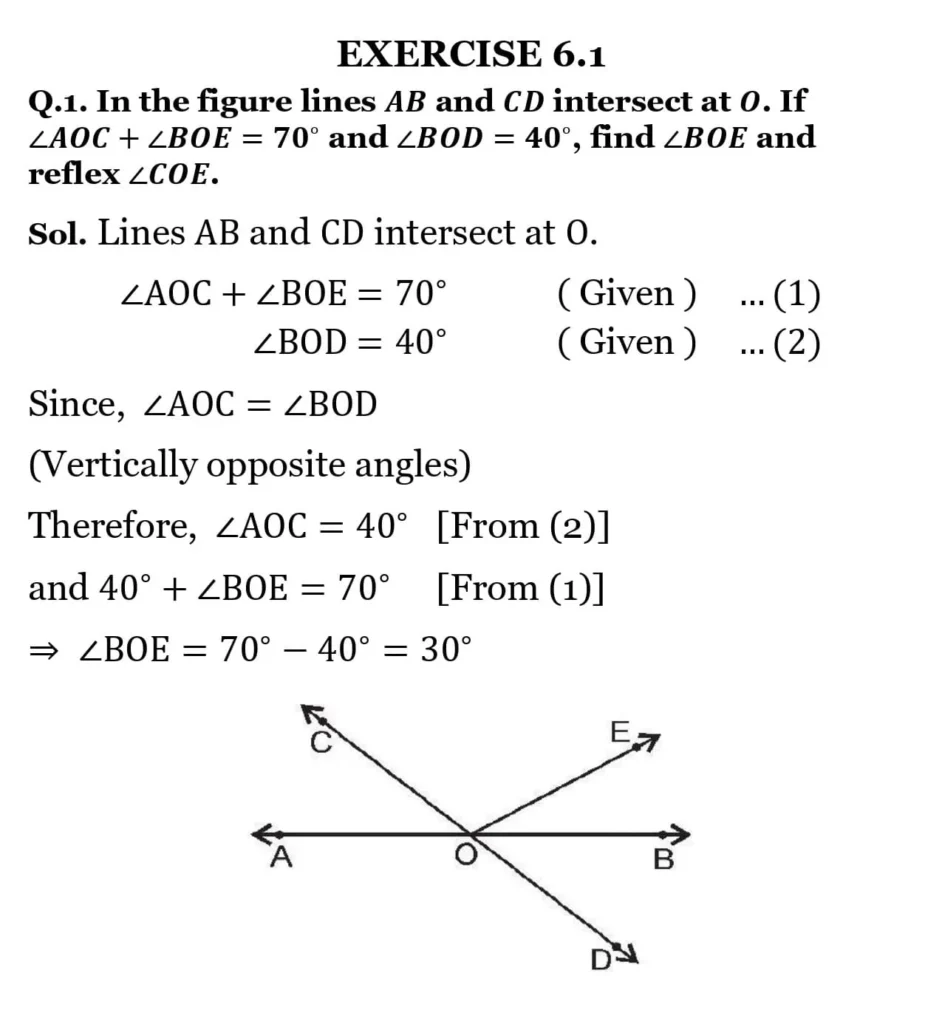
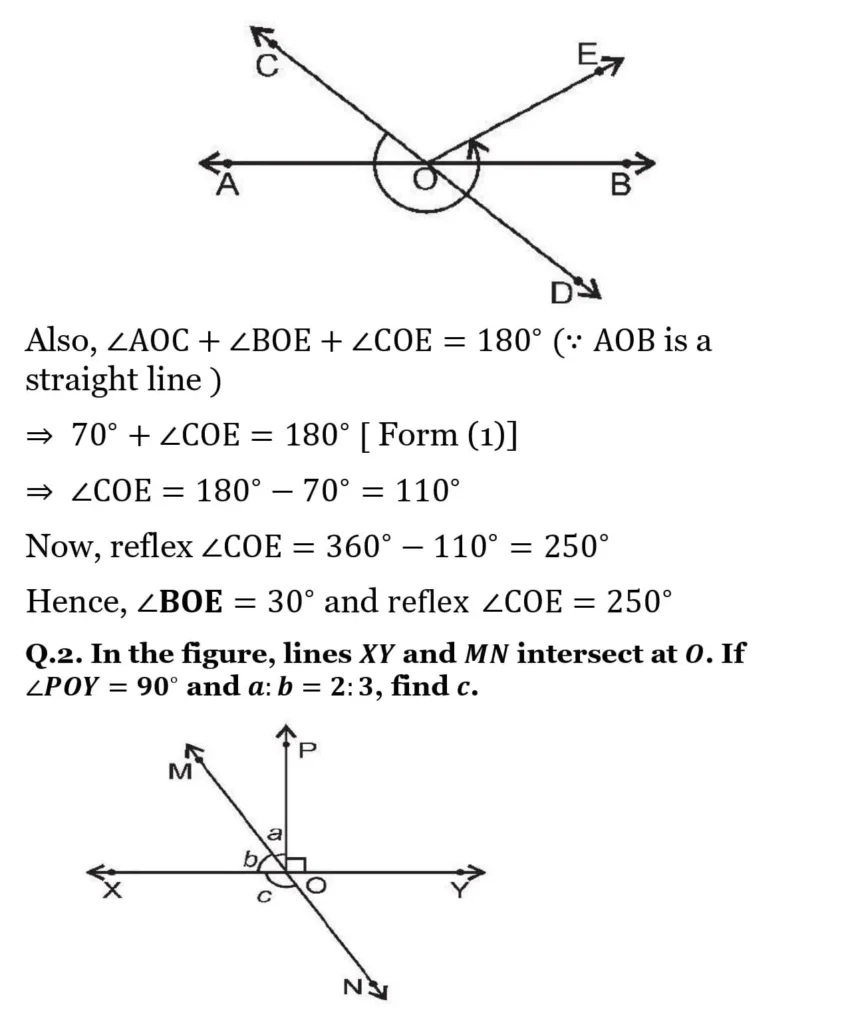
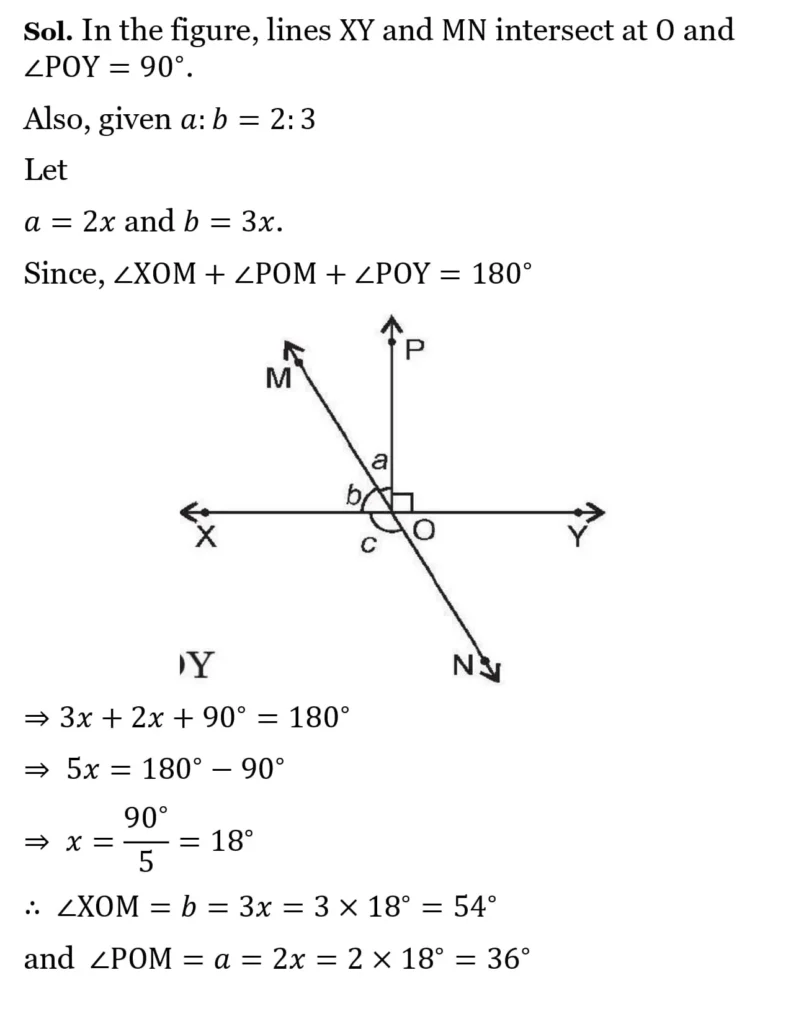

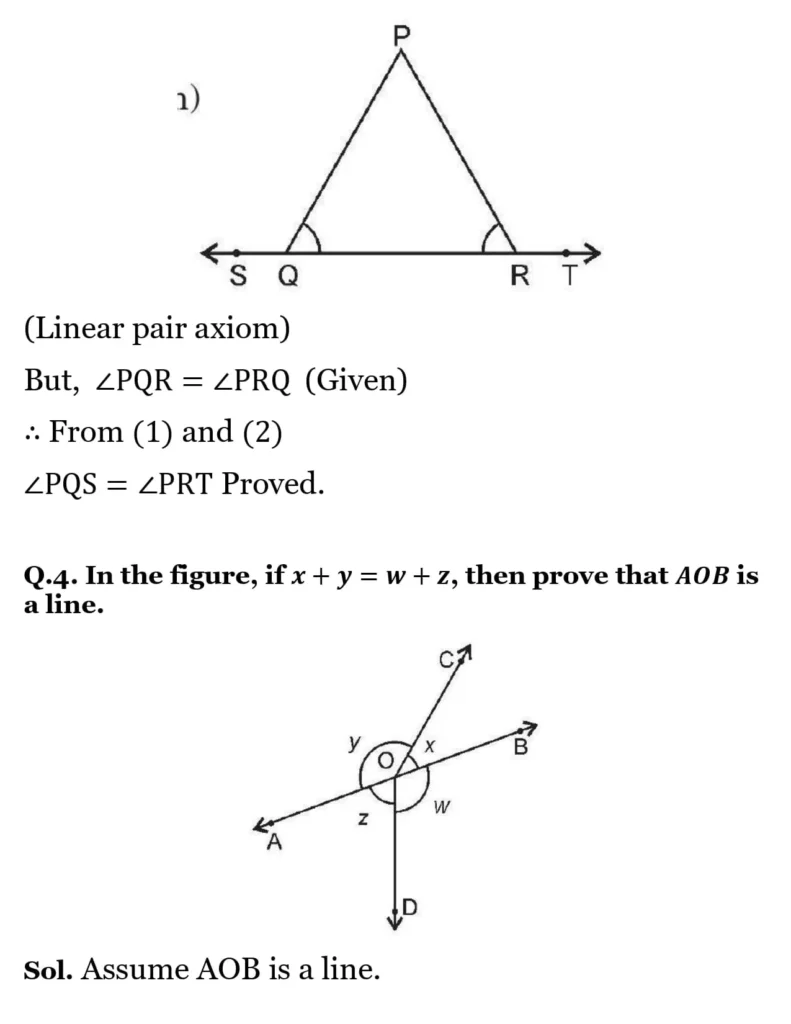
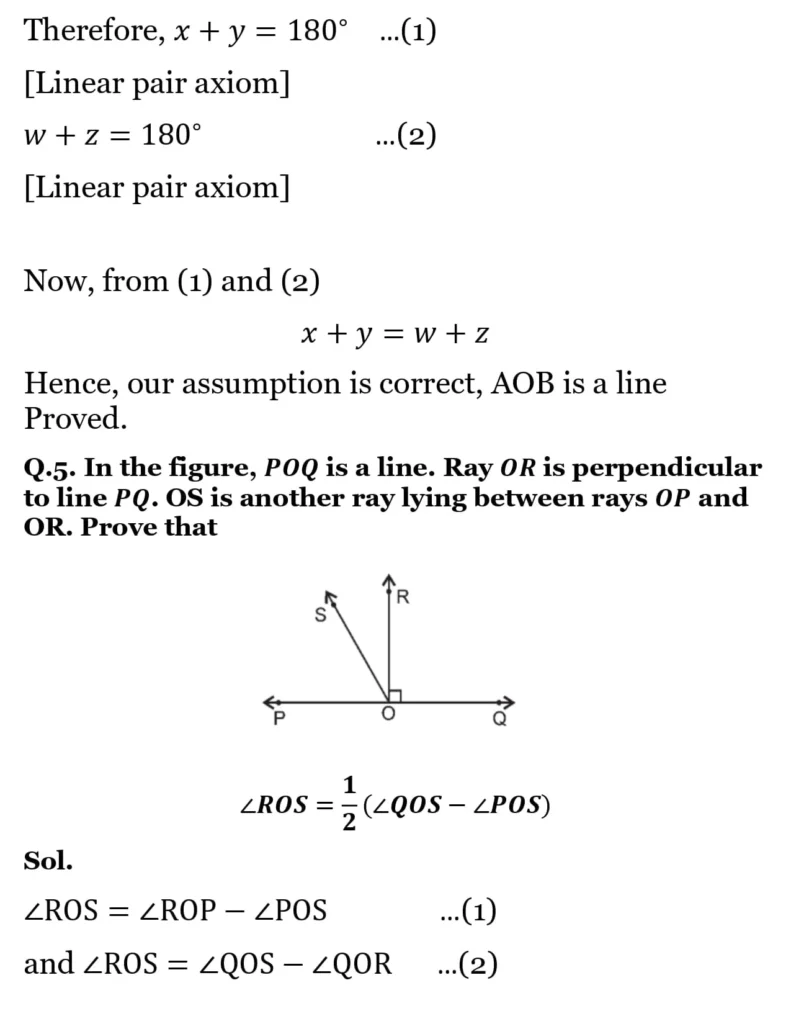

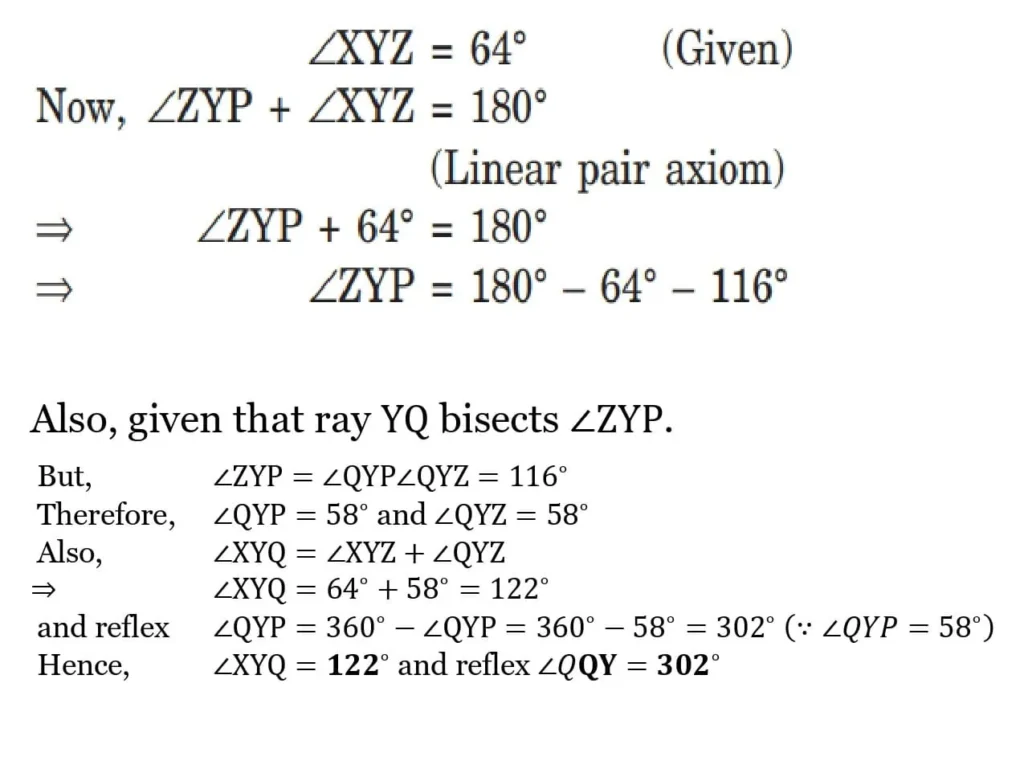
NCERT Solutions for Class 9 Maths Chapter 6 Lines and Angles Exercise 6.2

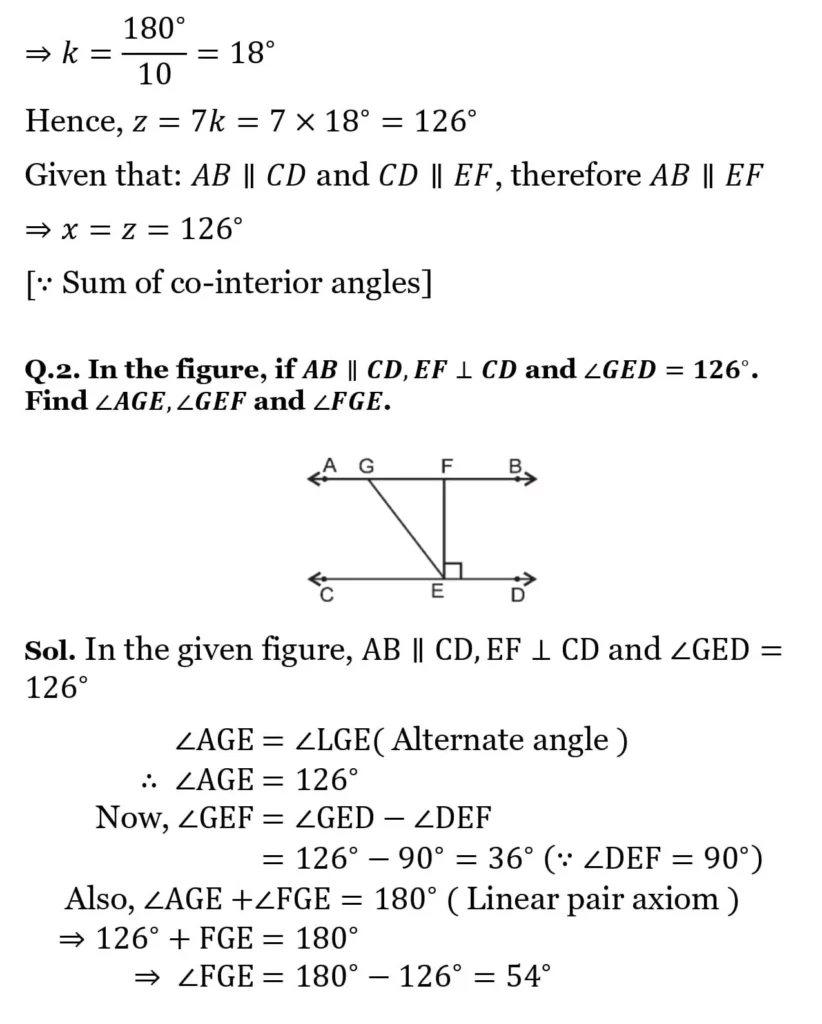
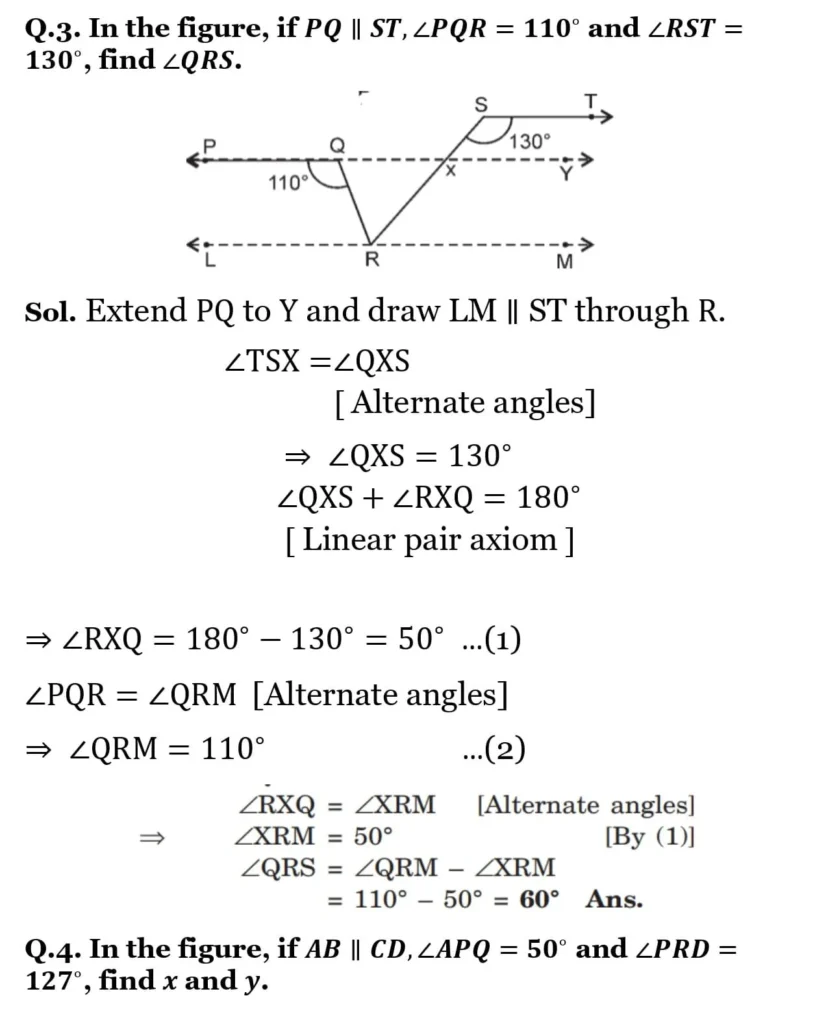

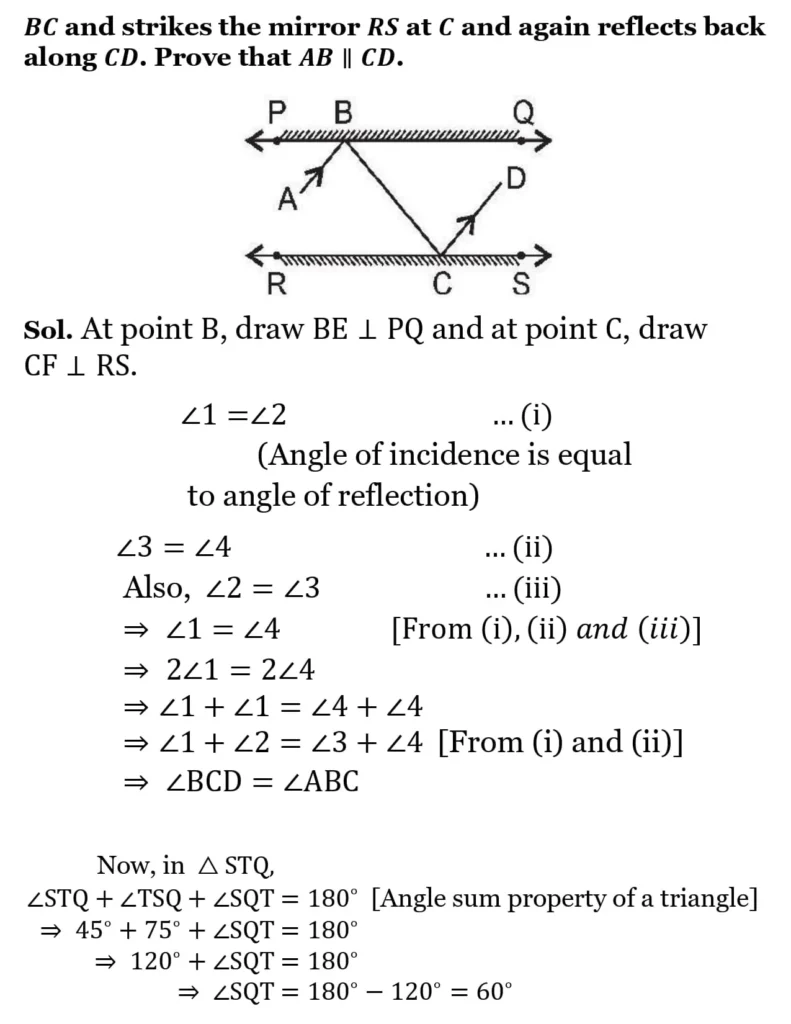

NCERT Solutions Chapter 6 Lines and Angles will introduce essential topics like the interaction of lines and angle pairs. These concepts will recur throughout various chapters in the class 10 NCERT curriculum such as trigonometry, and they will improve your understanding of geometry, Due to this prominence the NCERT solutions class 9 maths chapter 6 has been created to guide you while learning the subject.
Overview of the topics of Class 9 Chapter 6 Solutions Lines and Angles
In the previous chapter of Introduction of Euclidean Geometry students were introduced to some of the concepts that you will be dealing with now. Chapter 6 consists of the properties of lines and angles in relation to each other. Some key points include:
- Three or more points on a line are collinear, otherwise, they are non-collinear
- Angles are measured between two rays originating from the same point
- Complementary angles add up to 90 and supplementary add up to 180.
The axioms in NCERT chapter 6 class 9 explained?
- Axiom 1: The sum of adjacent angles formed by a ray on a line is 180o
- Axiom 2: if the sum of two adjacent angles is 180°, then the non-common arms of the angles form a line.
These two axioms together form the Linear Pair Axiom.
FAQs (Frequently Asked Questions):
What is a parallelogram triangle?
One important question you can expect in the NCERT solutions Chapter 6 Lines and Angles, pertains to this specific shape specifically in the lines and angles that are used to construct it. Specifically, the parallelogram has two sets of parallel line segments constructing it and if you connect the opposing vertices of a parallelogram you are left with two congruent triangles.
Moreover, the questions that come up in Class 9 chapter 6 Lines and angles solutions will include a figure consisting of a parallelogram with a triangle inscribed within it, one of the sides of the parallelogram will be the base of this triangle.
You will need to apply all the basics you learned in the chapter to solving these types of questions so it is vital that you go through the chapter 6 solutions to make sure that you are well prepped.
How many exercises are present in NCERT Solutions for Class 9 Maths Chapter 6?
Exercises 6.1 and 6.2 are the only ones present in the class 9 maths chapter 6 within the NCERT book. Exercise 6.1 consists of 6 long answer questions dealing with finding unknown angles and proving the given statements. Exercise 6.2 consists of 5 long answer questions all of which are based on a diagram given in the question.
What is the Importance of NCERT Solutions for Class 9 Maths Chapter 6 Lines and Angles?
The questions presented in class 9 chapter 6 will be an integral part of the geometry portion of your board exams. The axioms and concepts present in here will not only be a part of the question paper by themselves, they are also integrated into the concepts of trigonometry and construction that you will encounter later. Due to this interconnectedness that chapter 6 has with other concepts in the curriculum, this chapter has great importance to you.
Do I Need to Practise All Questions Provided in Class 9 Maths NCERT Solutions Lines and Angles?
The concepts given in chapter 6 Lines and Angles Due to these considerations we highly recommend that you diligently practise the solutions for NCERT class 9 maths Lines and Angles in their entirety. You will no longer need to struggle with finding the solutions to these exercises because we have detailed step-by-step answers for each question in the exercises available for you.
These solutions are accessible on our site and will no doubt clear any problems you may encounter while going through the chapter. We also have similar solutions for other chapters in the NCERT class 9 maths curriculum. So if you want to refer solutions to previous chapters and bolster your knowledge then you’re at the perfect spot.
Tagged with: 9 class maths chapter 6 | 9th class math chapter 6 question answer | cbse 9th class maths chapter 6 | cbse class 9 maths chapter 6 solutions | cbse class 9th maths chapter 6 | ch 6 class 9th maths | chapter 6 maths class 9 ncert solutions | class 9 chapter 6 maths ncert solutions | class 9 maths chapter 6 ncert